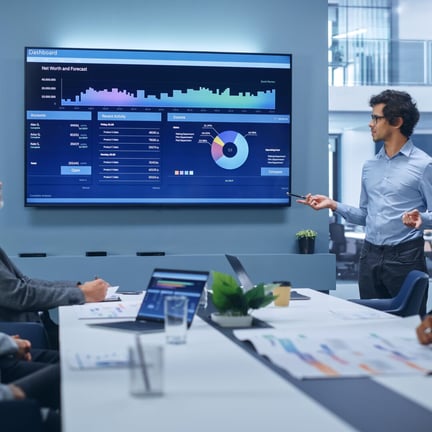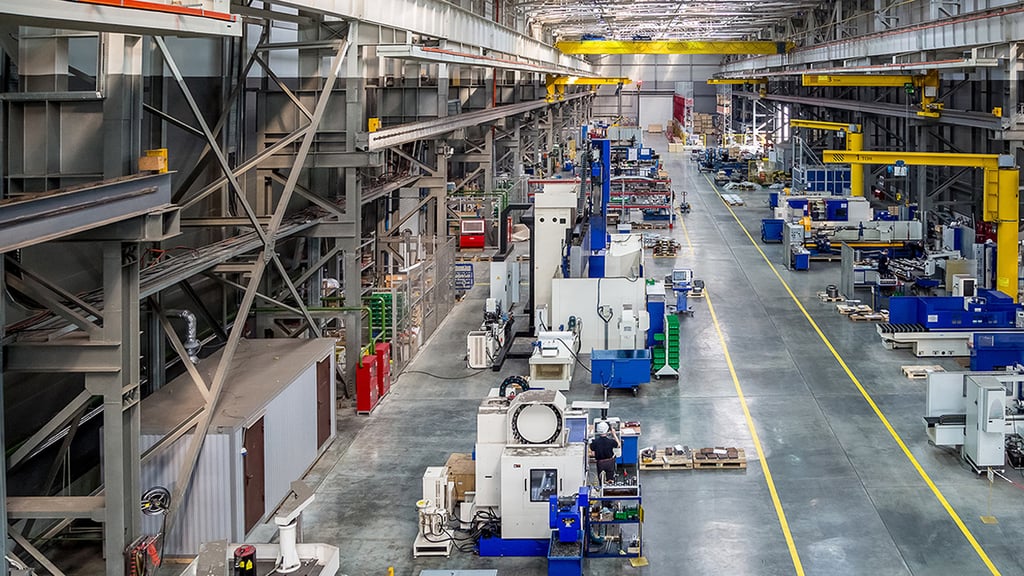As the global community moves closer to 2050 climate targets, the decarbonisation of supply chains is emerging as a priority for businesses, governments and consumers.
Supply chains often account for the largest share of a company’s Greenhouse Gas (GHG) emissions, particularly Scope 3 emissions from indirect, upstream activities. Despite this, fewer than 15% of companies have set meaningful upstream reduction targets, leaving significant opportunities for action untapped.
Organisations need a shift in mindset. Decarbonising supply chains is not just a challenge – it’s an opportunity to innovate, drive efficiency and build resilience. COP29 will play a key role in shaping the context in which businesses are expected to meet that challenge, and prompts a need to address Scope 3 emissions, engage suppliers effectively and navigate a complex regulatory landscape, as explored below.
Unlocking and understanding Scope 3 emissions
Scope 3 emissions originate from activities outside a company’s direct control, such as the extraction of raw materials, manufacturing processes and transportation within their value chains. These emissions are often several times larger than operational emissions, yet they remain poorly understood or unmeasured by many companies.
The first step to addressing these emissions is robust measurement. Companies must establish a comprehensive baseline of their value chain emissions. This requires detailed and accurate data collection, ideally gathered directly from suppliers. Assessment programmes like LRQA’s ERSA responsible sourcing programme offer a structured approach, enabling businesses to evaluate supplier performance against emissions criteria.
When combined with supply chain intelligence software, such as LRQA’s EiQ platform, companies can aggregate and analyse emissions data alongside other risk factors to identify hotspots and prioritise actions. Once an accurate baseline is in place, setting ambitious targets becomes the next step. The Science-Based Targets initiative (SBTi), for example, provides frameworks to guide businesses in aligning their reduction goals with global climate ambitions.
Importantly, leadership buy-in is also essential: companies with board-level oversight on climate change are nearly five times more likely to establish upstream Scope 3 targets than those without. Addressing Scope 3 emissions is not merely about compliance; it’s a strategic investment and therefore needs input at that level. As companies integrate emissions metrics into procurement and operational decisions, they also benefit from enhanced visibility, streamline processes and build stronger trust with stakeholders.
Furthermore, by engaging with suppliers to reduce Scope 3 emissions, businesses can unlock significant long-term benefits, such as improved supply chain resilience, access to green financing, and enhanced regulatory compliance. Embracing this approach not only mitigates risks but also creates new opportunities for innovation, cost savings and market leadership in a rapidly decarbonising economy.
Engaging suppliers: A critical lever for change
With a significant share of emissions generated in the supply chain, effective supplier engagement is essential. Yet this is no simple task, especially in regions with fewer or varying regulations and levels of technical expertise, or logistical barriers. Companies can adopt the following strategies to drive supplier collaboration:
- Embedding climate goals in procurement
Procurement processes are one of the most powerful tools for aligning suppliers with corporate sustainability objectives. By embedding climate criteria into supplier contracts, tenders and evaluation frameworks, companies set clear expectations. Supplier Codes of Conduct and Requests for Proposals (RFPs) can mandate emissions reporting and reductions as prerequisites for partnerships.
This approach not only drives accountability but also ensures that suppliers are incentivised to align their operations with the company’s climate objectives. For instance, offering preferential terms to suppliers that demonstrate meaningful progress on decarbonisation can motivate broader action across the value chain. - Building supplier capacity
In many cases, suppliers – particularly in emerging markets – face knowledge and resource gaps when it comes to emissions reduction. Companies can bridge these gaps through tailored support, such as training programmes, technical assistance and localised materials.
For example, Unilever has pioneered supplier engagement by providing hands-on guidance and region-specific tools to help suppliers measure, report and reduce their GHG emissions. These efforts are particularly impactful when cultural and logistical barriers are taken into account, ensuring that sustainability efforts are inclusive and effective. - Leveraging technology for transparency
Technology can play a pivotal role in supplier engagement and emissions management. Digital platforms enable companies to collect and analyse emissions data from suppliers at scale, while blockchain ensures secure, transparent tracking of materials.
Similarly, Internet of Things devices (hardware that can transmit data over the internet or other networks) monitor energy usage, waste and emissions in real time, offering valuable insights into operational efficiency. Emerging technologies such as advanced analytics, predictive modelling and digital twin technology can also help businesses optimise logistics, reduce waste and pinpoint cost-effective strategies for emissions reduction.
- Segmenting and prioritising suppliers
Not all suppliers contribute equally to a company’s carbon footprint. By segmenting suppliers based on emissions intensity or strategic importance, companies can focus their efforts where they will have the greatest impact. High-impact suppliers or those in emissions-intensive sectors, such as raw materials and manufacturing, should be prioritised for engagement and capacity-building efforts.
For suppliers where direct influence is limited, companies can collaborate within sector initiatives or form collective buying groups to amplify demand for sustainable practices. These coalitions strengthen leverage and help to align supply chains across industries with shared decarbonisation goals.
Navigating the regulatory landscape
Context is everything, and businesses need to deploy their decarbonisation strategies whilst keeping the regulatory landscape around them firmly in mind. As regulations around emissions reporting tighten, companies must prepare to meet increasingly stringent requirements. Among the key frameworks shaping the decarbonisation landscape globally are:
- Corporate Sustainability Reporting Directive (CSRD): Beginning in 2024, the EU’s CSRD requires companies to disclose detailed sustainability data, including Scope 3 emissions, making transparency a non-negotiable priority.
- US SEC Climate Disclosure Rule: This rule aims to provide investors with a more comprehensive view of corporate climate risks, helping them make informed decisions based on a company's full environmental impact.
- International Sustainability Standards Board (ISSB): By establishing global standards for sustainability reporting, the ISSB will drive consistency in emissions disclosures, reducing fragmentation across markets.
- Corporate Sustainability Due Diligence (CSDDD): CSDDD requires companies to address environmental and social impacts across their value chain, with Scope 3 emissions being a major focus due to their significant contribution to the carbon footprint.
Proactive alignment with these regulations not only ensures compliance but also positions companies as leaders in sustainability, attracting investment and consumer trust.
In addition to the regulatory bodies, collaboration with governments, Non-Government Organisations and industry peers is equally important. Initiatives such as Transform to Net Zero and the SBTi provide platforms for cross-sector innovation and standardisation. Government incentives – such as carbon pricing, subsidies for clean technologies and mandatory emissions disclosures – further accelerate action by creating financial and regulatory drivers for sustainability.
Looking ahead: A collective responsibility
Decarbonising supply chains is one of the most significant challenges of our time, but it is also a powerful opportunity for transformation. By prioritising Scope 3 emissions, embedding sustainability into procurement and leveraging technology and collaboration, companies can turn ambition into action.
As a combination of COP29, private financing, and the decline in climate resilience sets the stage for more aggressive climate commitments, businesses must embrace supply chain decarbonisation as a strategic imperative. Success will require bold leadership, innovative approaches and a relentless focus on collaboration.
Find out how LRQA can help in addressing the impact of ESG challenges on your business.









